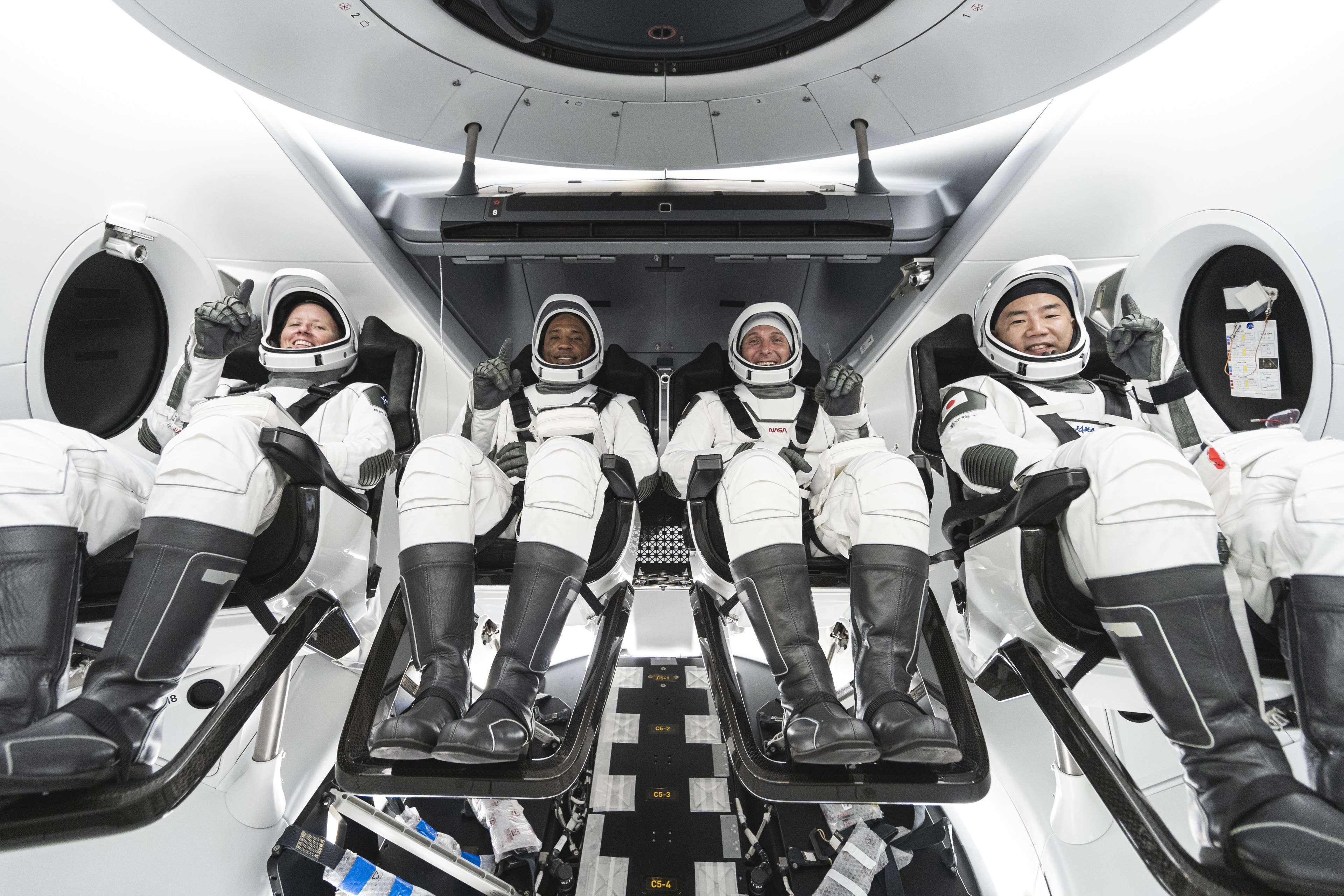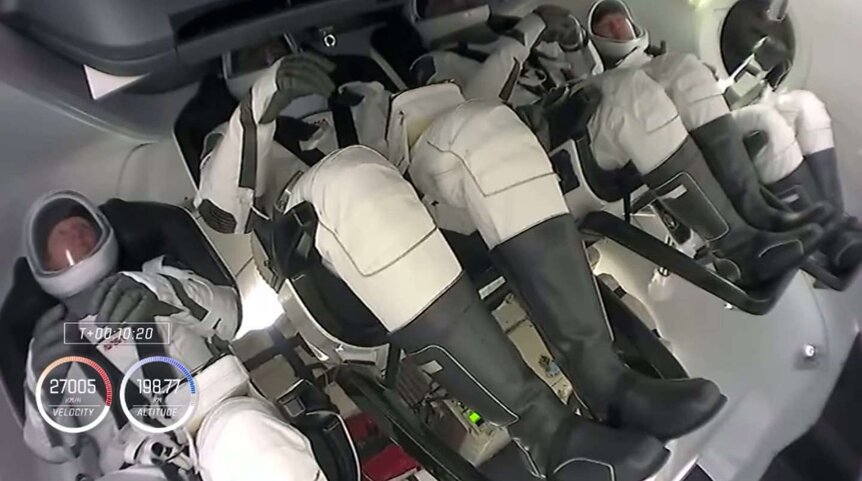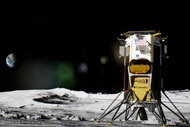Create a free profile to get unlimited access to exclusive videos, sweepstakes, and more!
SpaceX and NASA successfully launch four astronauts to the ISS in first FAA-licensed mission

SpaceX and NASA have once again made space-travel history with the first official launch of the reusable Falcon 9 rocket and Dragon spacecraft. The Crew-1 astronauts — comprising NASA's Mike Hopkins (Crew Dragon commander), Victor Glover (pilot), and Shannon Walker (mission specialist), and the Japanese Space Agency's Soichi Noguchi (mission specialist) — are now on their way to the International Space Station after achieving successful liftoff from Cape Canaveral's Kennedy Space Center this evening at 7:27 p.m. EST. Falcon 9 hit supersonic in about a minute-and-a-half. The separation stages went smoothly and Stage 1 of the rock successfully landed back down on SpaceX's drone ship in the Atlantic Ocean.
Glover, who's been preparing to pilot this mission for the last two years, has never been to space before. He will be the first Black astronaut to come aboard the ISS as part of its extended crew. "It is something to be celebrated once we accomplish it, and I am honored to be in this position and to be a part of this great and experienced crew," he said during a recent Q&A alongside his fellow team members. “And I look forward to getting up there and doing my best to make sure we are worthy of all the work that’s been put into setting us up for this mission. You know, unlike the election — that is in the past or at least is receding into the past — whereas this mission is still ahead of me. So, let’s get there, and I’ll talk to you after I get on board."
This is the very first space-bound mission to be commercially licensed by the Federal Aviation Administration — the same government agency that oversees commercial airlines. As hoped, this unprecedented achievement marks a giant step forward in humanity's ultimate dream of colonizing the wider cosmos. Thanks to reusable rockets and capsules that are both affordable and safe, space travel (even if it's just into low Earth orbit) may become a brand-new industry for the global economy. People may eventually start taking vacations to the moon in the same way that they fly to any exotic locale.
"We have the most complex airspace in the world over the United States. And now we're going to expand it even more into space. We're really integrating both our aeronautics, our aircraft that we fly and enjoy everyday, with space operations. We're gonna have both those things happening at the same time with human spaceflight, and that's what we're doing here today at the Kennedy Space Center," NASA Deputy Administrator Jim Morhard said during a SpaceX livestream prior to the launch.
"Right now, we have a $350 billion space economy in low Earth orbit," Morhard continued, adding that the business of LEO travel could become a trillion-dollar-plus industry in the near future. "We're starting the new dawn of a new Space Age."
"This is a tough business to break into," said SpaceX President and COO Gwynne E. Shotwell when asked for her prediction on how many other companies will be entering this burgeoning industry, now that SpaceX has cracked the code on privatized spaceflight. While Boeing is currently working on its own missions, Shotwell admitted that she doesn't expect any new companies to try and get in on the action over the next five years. "But hopefully within 10, there'll be plenty of folks doing this kind of work to make it more accessible to more [people]," she continued.
Watch the full stream below:
This mission was made possible by the historic Demo-2 test launch that successfully sent astronauts Bob Behnken and Doug Hurley to the ISS back in late May of this year. The duo eventually returned to Earth a little over two months later in early August. Both men (lovingly referred to as "The Space Dads" among their peers) were on standby before the launch to offer their unique commentary on the mission. In fact, Behnken revealed the firsthand Crew Dragon wisdom he and Hurley were able to pass onto the new team.
"We tried to give them the benefit of the experiences that we had had and some suggestions on some things that might help their mission go a little bit smoother," he explained. "But I think the biggest message that we passed onto them was that there was a good ship here and it did a great job getting us to [the] space station and back; and they should have confidence in the team as they go up and execute their mission. There are things that can be improved after our test flight and they took a lot of those minor things to heart, but overall, we just passed on a confidence in the vehicle, and that goes a long way [for] a team that's got a lot of things to do as they lead up to the mission that they're about to launch on today."
The Crew-1 mission (which was rescheduled from Saturday, Oct. 14 due to inclement weather) is just one of "six planned rotational missions" that NASA and SpaceX have contractually agreed upon. Hopkins, Glover, Walker, and Noguchi will stay aboard the ISS for the next six months.
"The big milestone here is that we are now moving away from development and tests, and into operational flights ... This is truly a commercial launch vehicle and we are grateful to our partners at SpaceX for providing it, and our partners at the FAA for licensing it," NASA Administrator Jim Bridenstine said at a press conference shortly after the launch. He went on to say: "This is a great day for the United States of America and for Japan. We look forward to many more years of a great partnership — not just in low Earth orbit, but all the way to the moon."
"I could not be more proud of the work that we've all done together here today," added Shotwell. "The launch looked beautiful; I don't have any specifics on any anomalies that we had, which is great ... Dragon was dropped off roughly 12 minutes into the mission into a beautiful orbit, and she's operating just fine — all systems nominal ... We approach the space station in a little over 26 or so hours from now and then we'll be able to breathe a sigh of relief. In the next 15 months, we should be flying roughly seven Dragon missions and this mission represents the initiation of the Dragon in orbit continuously, knock on wood. It certainly is the beginning of a new era in human spaceflight."
Shotwell also confirmed that SpaceX CEO Elon Musk was "tied in very closely to the launch. I have a series of texts to prove it," she said with a smile. "As usual, regardless of where he is on the planet, he is watching closely and providing guidance and support."















